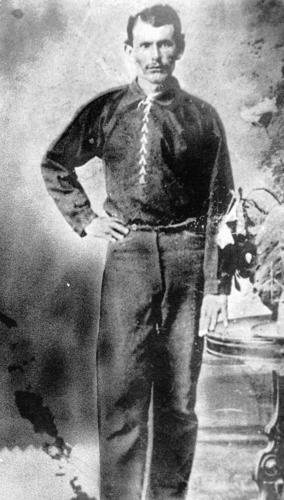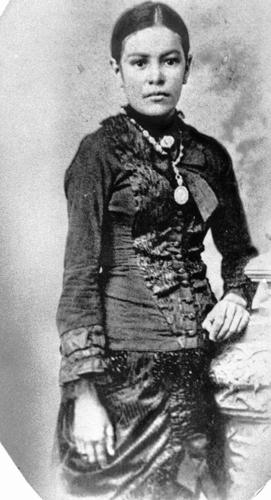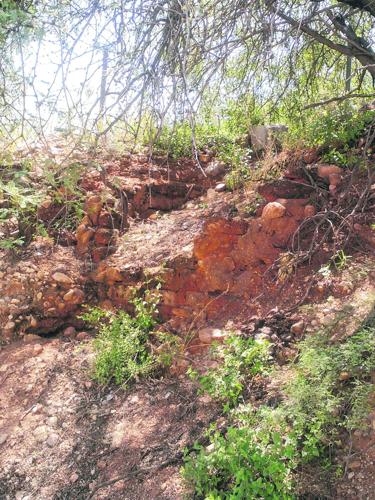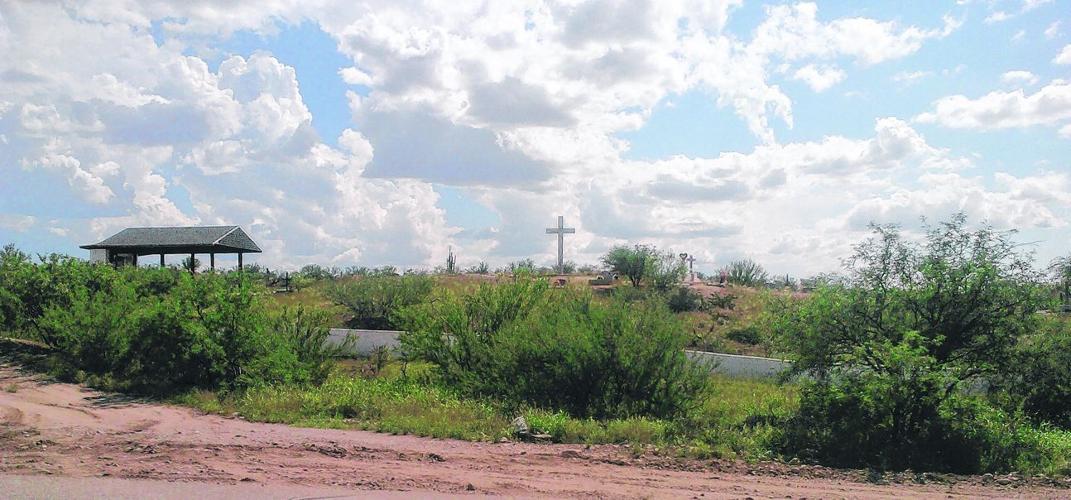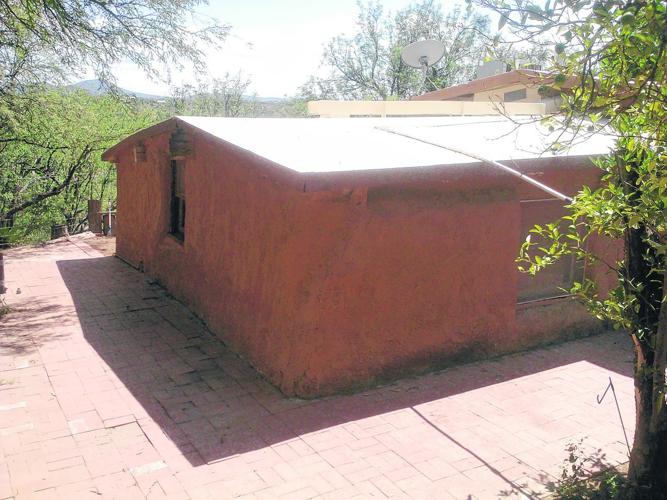Camino De Ruiz is a short road that belies the long history of the family for which it is named.
Maria Paz de la Cruz Telles was born Jan. 24, 1863, in Tucson, to Nicolas and Pasquala (Ortega) Telles. Her great grandfather Jose Telles, served as a soldier in the Presidio de San Agustín de Tucson, in the late 1700s, and is believed to be the founder of the Telles/Tellez family in Tucson for whom there is a connection with Telles Street in downtown.
Her father is known to have been a laborer and would remarry soon after the death of Pasquala to Tiburencia Vilderray.

Jose Ruiz. Courtesy of Carol (Ruiz) Huerta
Sometime before 1883, Paz would marry Jose M. Ruiz. Jose was born to Jesus and Fernanda (Mesa) Ruiz about 1860 in Ures, Sonora, Mexico. Paz and Jose had 10 children: Josefa, Juan, Nicolas, Margarita, Connie, Isabel, Juana, Mary (Maria), Jose and Armando.
In 1899, Paz filed for a homestead of 40 acres in the Rincon Valley, just north of the Rincon Creek and also filed a claim for water rights to irrigate the land. She would receive her homestead patent in 1906.
Paz and Jose built, on a hill overlooking the Rincon Creek, the ranch house that was a large adobe room with a sod roof and a low ceiling. The ceiling was supported by three vigas, which were railroad beams from the La Cienega Bridge, with each viga resting on a forked mesquite trunk. The house was divided into three rooms, which included a dining room and a kitchen with no sink or plumbing. They also had a small fireplace.
The couple farmed and raised cattle on the Ruiz Ranch, (also symbolized as cattle brand as an “R” above a “Z” with a line in between) and the nearby area. The growing of crops was seasonal and depended on the rainfall. They dug a system of ditches leading from the Rincon Creek to their fields to irrigate their farm. Horse-drawn farm equipment such as seeders, balers and cultivating disks were used.
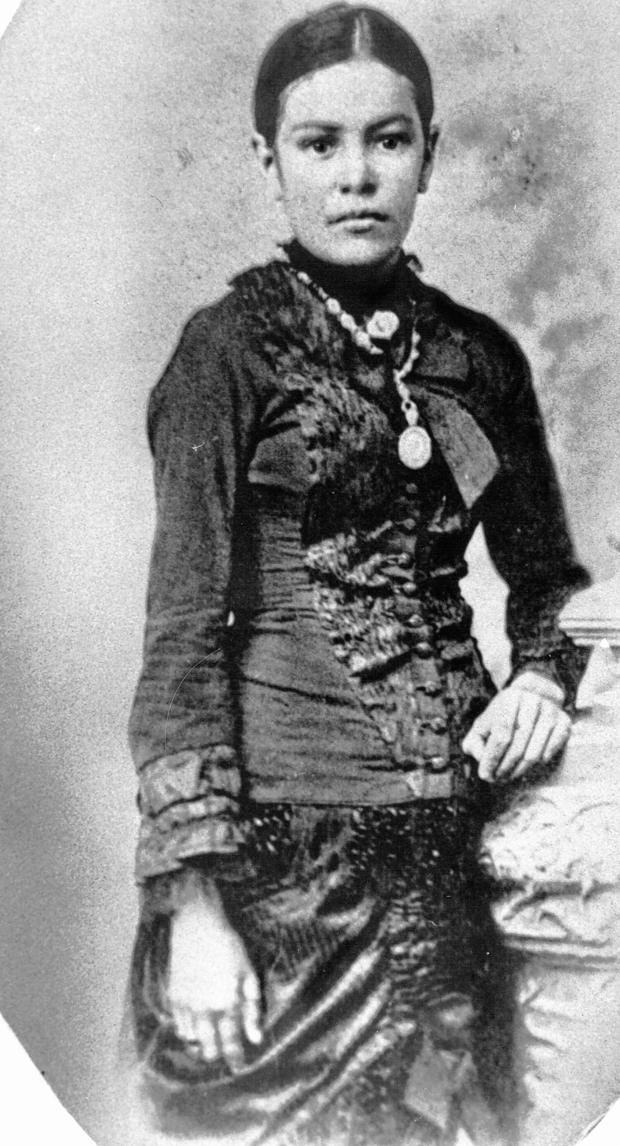 |
The crops included corn, beans, squash and pumpkins. In addition, they sold mesquite firewood, which was used for wood burning stoves and had at least one limekiln to turn limestone into lime, which was used in the construction of houses.
Jose would take trips by buckboard to Tucson or Benson to sell his produce. The trip would usually take three days, two days of travel and another day to conduct business. With some of his earnings he would buy provisions such as sugar, coffee, flour and other necessary supplies.
Around 1919, son Nicolas Ruiz homesteaded land north of his parents’ 40-acre homestead, as well as land east of theirs, with a total of 640 acres appearing on his homestead patent when he received it in 1924. His sister Concepcion homesteaded about the same amount of land east of her brother’s land and received her homestead patent the same year.
In 1934, Jose Ruiz died from pneumonia at the family’s home in town, 709 S. Fremont Ave., in an area known as Millville. Six years later, son Nicolas died from tuberculosis at the family home.
In 1946, Paz sold her original 40 acre homestead along with land to the east and to the southeast of it, to a grandson Ray Ruiz, and his wife Julia (Aguirre) Ruiz. The sale included 200 acres along with a wagon, a well and several farming machines.
Three years later Paz would take her final breaths and pass on at the family home.
In the mid-1950s, Ray’s friend Gilbert Acosta, bought land near him. Acosta was born on April 18, 1906, in Hermosillo, Sonora, Mexico. When he was an infant, his family moved to Tucson for about three years before relocating to Cananea, Sonora. After his father died, his mother, Adela, and he took a dangerous stagecoach trip from Cananea to San Miguel. Expecting to be attacked by Indians, they made the 90-mile trip without any trouble. They took a train to Nogales and onto Tucson, arriving in 1911.
In 1916, he began selling newspapers to help support his mother and himself, a line of work he would stay in for most of his life as he later became circulation manager for Tucson Newspapers Inc. In 1932 he applied for American citizenship and received it. The following year he married Beth Hunter, whom met working at the Arizona Daily Star.
On the land he bought near the Rincon Creek, Gilbert Acosta built the Rincon Creek Ranch and when a road was built to the ranch he named it the Rincon Creek Ranch Road.
Gilbert and Ray were involved in the creation of the Rincon Memorial Cemetery Association and the Rincon Memorial Cemetery on Old Spanish Trail. Gilbert organized the Articles of Incorporation for the Rincon Memorial Cemetery Association in 1960. Many of the pioneers of the Rincon Valley are buried there.
To get to their properties, both Ray and Gilbert had to go through three gates on three different people’s property beginning at present-day Old Spanish Trail. This was time consuming and inconvenient.
In 1959, Gilbert Acosta and 13 others petitioned the Pima County Board of Supervisors to build a road from present-day Old Spanish Trail (originally called Pistol Hill Road) to Rincon Creek Ranch Road. The name originally proposed was Camino Rinconado, but was changed to Camino Loma Alta (Tall Hill Road or High Hill Road) in honor of the Loma Alta, the area’s highest hill, located east of the road.
In April, 1962, with still no road for the ranchers, Acosta wrote a letter to the Board of Supervisors urging the road to be built. Construction of Camino Loma Alta was approved a few months later.
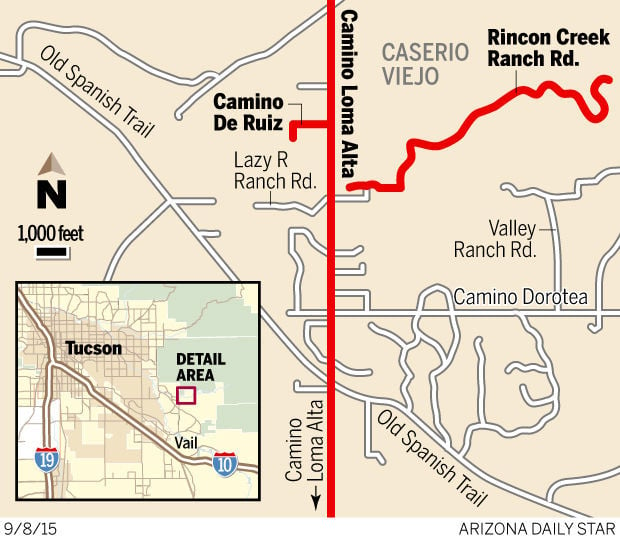 |
On March 7, 1963, Ray Ruiz gave land to Pima County for the extension north of Camino Loma Alta. The road extension was approved by Pima County on April 2, 1963, and was later built. This ended years of some ranchers having to drive through other people’s property, opening and closing gates.
In 1983, the Pima County Board of Supervisors approved Camino De Ruiz (Ruiz Road) named in honor of the Ruiz family. The road is about where the northern border of Paz Ruiz’s original homestead in 1899.
In 1984 Gilbert Acosta passed away and the following year Ray Ruiz died.
Today a great granddaughter of Jose and Paz Ruiz resides in the original adobe ranch house that was part of the homestead and the Rincon Creek Ranch is now a guest ranch.
According to Carol (Ruiz) Huerta, a great- granddaughter of Paz and Jose Ruiz, the road now called Camino Dorotea (Dorothy Road) was originally called Brown Road. It’s very likely Brown Road took its name from A.P and Dorothy Brown said to own the nearby X-9 Ranch. In 1961 the road received the name Camino Dorotea likely in honor of Dorothy Brown.



